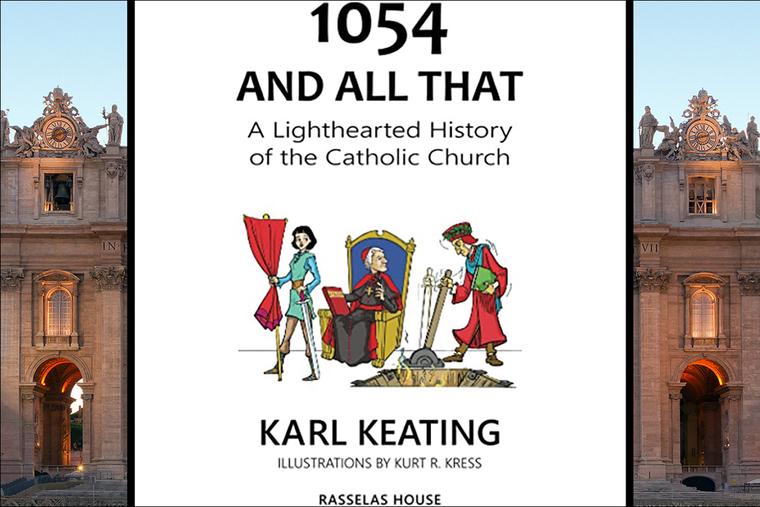Laughing and Learning About Catholic History With Karl Keating
‘1054 and All That’ Is a Raucous Excursion Through Church History

Karl Keating has been a household name among Catholics since the late 1980s, when he founded a lay apostolate dedicated to Catholic apologetics and evangelization. In the 1990s I produced Al Kresta’s daily broadcast on Ave Maria Radio in Ann Arbor, Michigan, and Karl’s “Catholic Answers” broadcast followed immediately after. I’d leave the radio station when our show ended at 6:00pm, and Karl would be my companion for the long drive home to Detroit.
His books, too, were extremely popular and extremely helpful for those interested in learning more about the Catholic faith. I kept on hand several copies of his Catholicism and Fundamentalism, and shared them with friends who challenged my faith. With another friend who inquired seriously, without aggression, I sometimes shared What Catholics Really Believe.
But while Karl Keating has earned his reputation writing more than 20 solid apologetic books, he’s broken the mold with this latest one. It’s an understatement to say that there’s humor in 1054 and All That: A Lighthearted History of the Catholic Church — there’s a laugh on every page!
His readers agree: Catholic writer Peter Kreeft praised the book, asking “What would it feel like to read 2,000 years of Church history in 140 pages written by Monty Python or the editors of The Onion (the successor to Punch)? Like a hundred giggles and belly laughs. Like this book.”
Who should read 1054 and All That? Well, Catholics for sure — they’re the group most likely to understand the humor (and the group most able to discern humor and recognize the exaggeration and wordplay, and thus most likely to appreciate Karl’s silly reinterpretation of reality). Catholic armchair theologians will play along with enthusiasm, chuckling at Karl’s turn of a phrase.
But I’m thinking particularly of the guy who’s not a heavy reader, who might prefer to spend his evenings in front of the TV set rather than picking up a heavy theological tome. Keating, in this lighthearted history of the Catholic Church, might capture the attention of even the most resistant of readers and help them to understand the history and truth which are important to our understanding of the Faith.
As an example, I randomly opened the book to Karl’s essay on Pelagianism. It starts like this:
One heretic against whom Augustine wrote was Pelagius. The two men were born in the same year, 354. This was convenient, since otherwise 354 was a dull year, the only other historical events being a circus and theater shows hosted by the Emperor Constantius to mark the thirtieth year of his reign.
From Albigensianism to Aquinas to Arianism to Augustine to Avignon, Karl Keating tells the story as you’ve never heard it before. He laughs at heresies like Manichaeism and Jansenism and Monothelitism, while honoring heroes like St. Patrick and St. Dominic and St. Francis of Assisi. Of St. Thomas Aquinas, Doctor of the Church, he writes:
Thomas has come to be considered not just the Smartest Man in the Europe of his time but the Greatest Theologian of All Time, despite the fact that, when he was in school, his classmates called him ‘The Dumb Ox,’ a nickname taken from the title of a book by G.K. Chesterton.
Catholic apologist Gary Michuta said of the book, “Karl Keating has done the impossible: he has made history fun.” Steve Ray reported that he laughed on every page. And Carl Olson, editor of Catholic World Report, wrote, “Rarely has the Catholic Church’s past been rendered with such wry readability.”
If you’re intrigued by the idea of combining history and apologetics, make room on your bookshelf for 1054 and All That. Then have a good time laughing and learning, praying and playing with Karl.
- Keywords:
- church history
- karl keating
- history
- book reviews
- humor
















